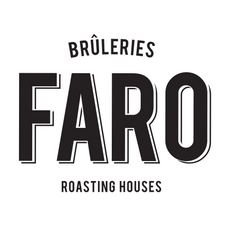The first, second and third waves of coffee... Spare us the fourth, please!

We’re hearing more and more about the third wave when it comes to coffee. In talking with most people, I’ve come to realize that few really know what the third wave is. People have got light roasts, attitude, independent coffee movements and knowledge of coffee all mixed up with the third wave. And some people who talk about a third wave don’t really know where it originated. ’Cause guess what: before the third, there was a second wave, and a first. To make it easier to understand, we could replace the word “wave” by “major movement” in the coffee market.
The first wave
To illustrate the first wave, we have to go back to the war years. During the first and second world wars, coffee was surely one of the rare treats in a soldier’s day. An interesting fact: in these years when raw coffee production was at a record high, close to the entire Brazilian harvest was directed to the war effort, creating a shortage in Canada and the U.S. And because coffee is such a good “drug”, the millions of homecoming soldiers brought a new habit back with them after the war. The first wave, then, is the discovery of coffee and its introduction into the day-to-day diet.

The second wave (after 1970)
In this new exploding market, companies grappled for position, inventing strategies to get their coffee in the limelight. The second wave thus involved two main movements: new brewing approaches and informing consumers about where coffee comes from (now, isn’t that a revolutionary notion!). Espresso became the norm in Europe and filter coffee was soon de rigueur in America. Some countries even developed quality seals. Think of Juan Valdez (hey, I miss that guy!).
The third wave (from 2000 to today)

The third wave involves a concerted effort by the entire production chain to promote the product. There’s more of a “wine steward” approach, with information about beans, farmers, botany, specific regions and the various processes. Knowing where the beans come from is good, but when you think about it, it doesn’t really say much if we’re not specific. It’s like saying, “Ontario apples are my favourite.” O-kay ... but do you mean any kind of apples? From any region? Regardless of how you eat or cook them? So the third wave got interested in the different methods and growing regions: in short, learning how it really works, to get a better cuppa. Mainly, we can thank the independent roasting houses and baristas at independent cafés who highlight the specific region with every cup they brew (and they’re passionate about it, too!!!). Better information access has also made sharing knowledge easier. (I won’t talk about a fad phenomenon ;) ) Now it’s just a “simple” matter of mastering all this information and learning to unpack it and put it in perspective. Which is exactly why we developed the “limited roasting” product line: limited in terms of numbers and time. Because one fundamental principle people tend to forget is that coffee comes from a fruit, and harvests vary over time (like wine!). That’s why tasting and re-tasting, day after day, is important (yeah, it’s a tough job, but someone’s got to do it!).
In closing, I just hope capsules aren’t going to be the fourth wave.



